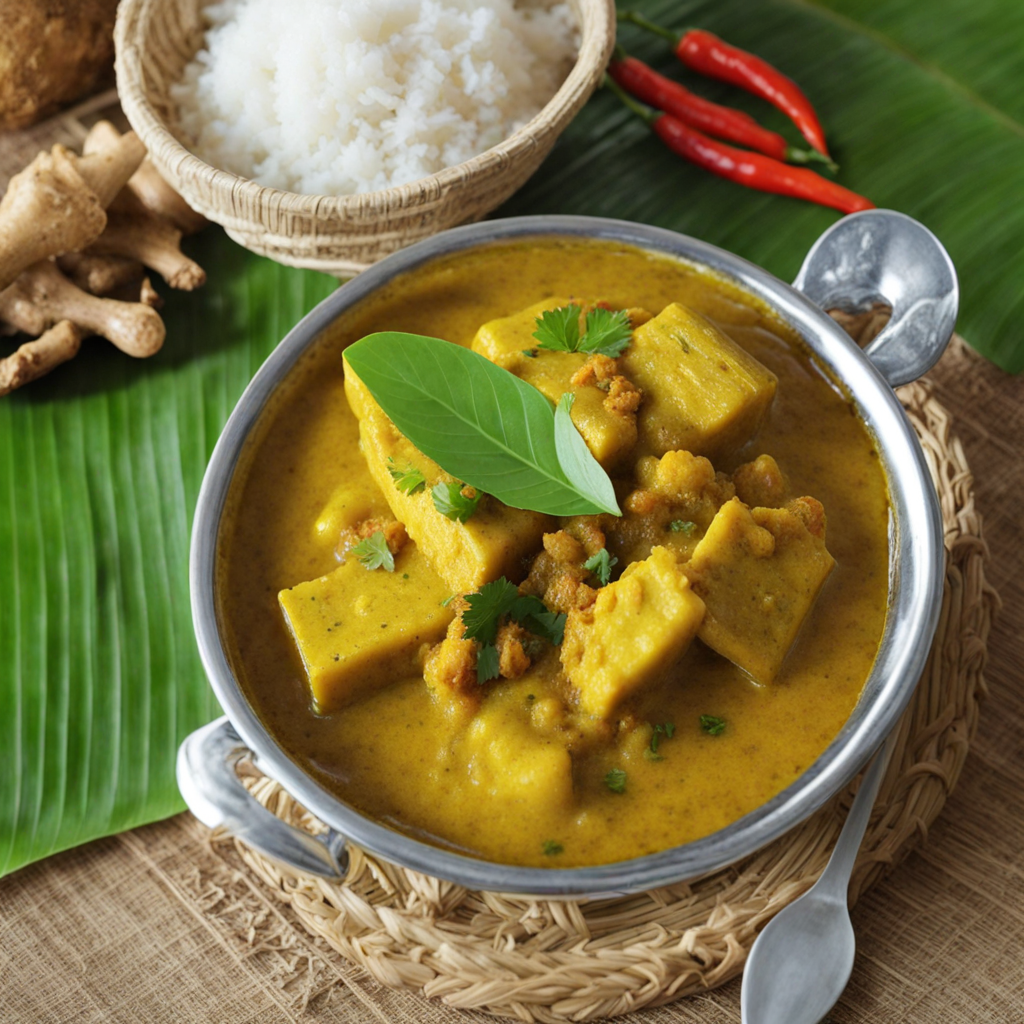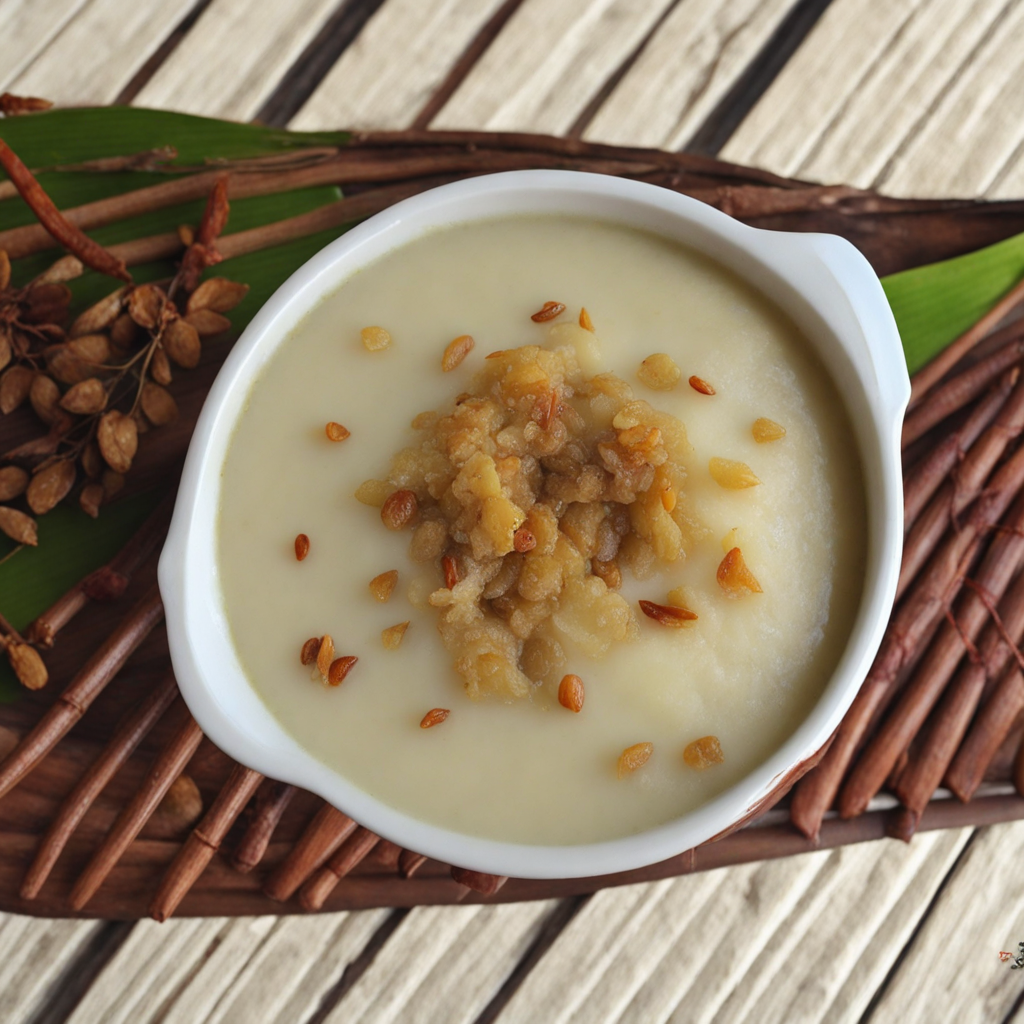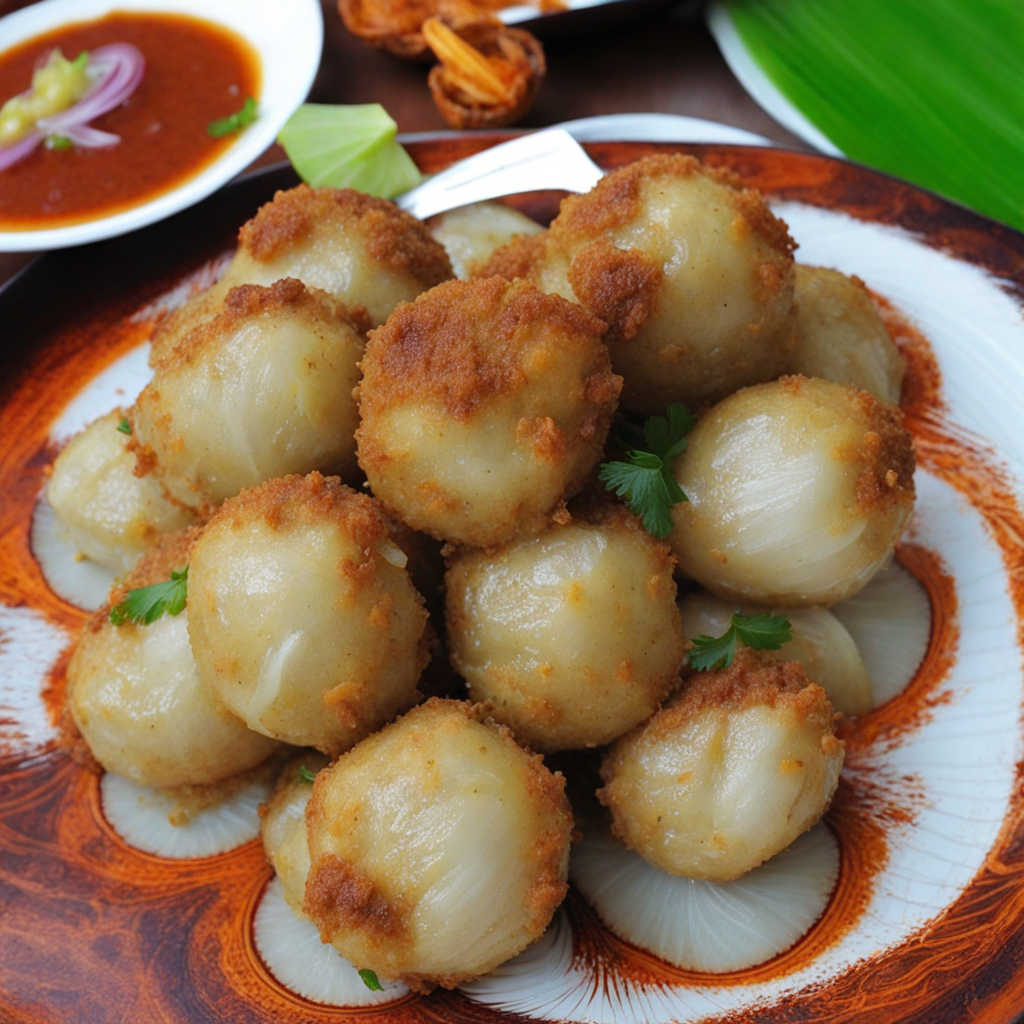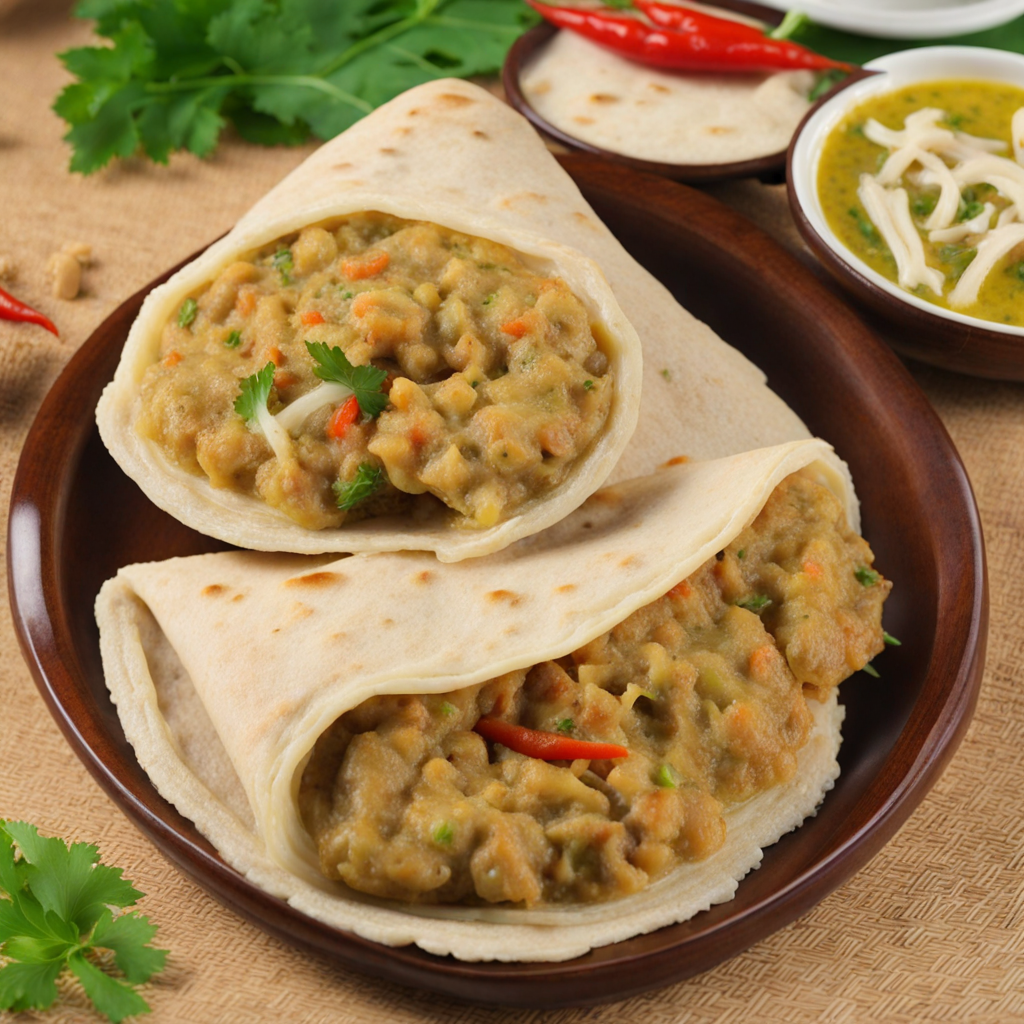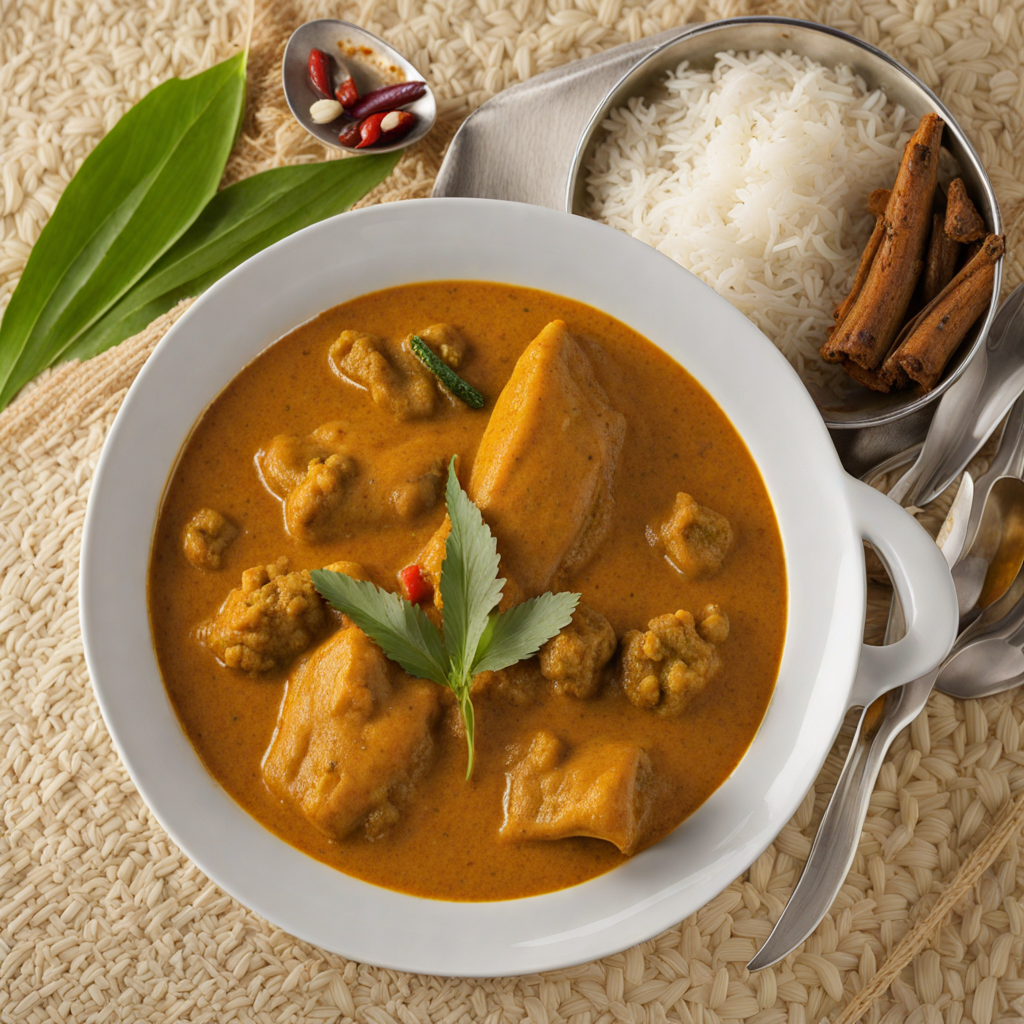Bambukeylu Hiti
Bambukeylu Hiti is a delightful dish from the Maldives that beautifully showcases the rich flavors of the region. This traditional Maldivian dish is primarily made with fresh tuna, which is a staple in the islands, known for its succulent texture and deep, oceanic flavor. The tuna is marinated with a blend of local spices, lime juice, and coconut, which adds a zesty twist and a hint of sweetness, creating a harmonious balance that tantalizes the taste buds. The use of freshly grated coconut enhances the dish's tropical essence, making it a true reflection of Maldivian culinary culture. The preparation of Bambukeylu Hiti involves a unique cooking technique that infuses the fish with aromatic spices, often including chili, garlic, and ginger. This combination not only elevates the flavor profile but also adds a hint of warmth that lingers on the palate. The dish is typically served with a side of steamed rice or flatbread, allowing the flavors to meld beautifully, while providing a satisfying base to soak up the delicious juices. Each bite offers a burst of freshness that transports you to the sun-kissed shores of the Maldives. What makes Bambukeylu Hiti stand out is its versatility and the emphasis on freshness. It can be enjoyed as an appetizer or a main course and is often accompanied by a tangy dipping sauce made from lime and chili, which complements the richness of the fish. The dish is not only a treat for the taste buds but also a feast for the eyes, with vibrant colors and textures that reflect the stunning scenery of the Maldivian islands. Whether you’re a seasoned foodie or a curious traveler, experiencing Bambukeylu Hiti is a journey into the heart of Maldivian gastronomy.
How It Became This Dish
The History of 'ބަމްބުކެލު ހިތި' (Bammbukey Hithi) from Maldives Introduction: The Essence of Maldivian Cuisine The culinary landscape of the Maldives is a vibrant tapestry woven from the threads of its geography, culture, and history. Among the many traditional dishes that define Maldivian cuisine, 'ބަމްބުކެލު ހިތި' (Bammbukey Hithi) holds a special place. This unique dish, often referred to as the "banana leaf wrap," not only showcases the island nation’s rich agricultural bounty but also reflects the interplay of tradition, community, and the natural environment. Origins: A Culinary Journey through Time The origins of 'Bammbukey Hithi' can be traced back to the ancient agrarian communities of the Maldives. The islands, with their lush vegetation and fertile soil, have long been a source of a diverse array of flora. Bananas, in particular, have been a staple crop for centuries, thriving in the tropical climate. The method of cooking with banana leaves is believed to have originated from Southeast Asian influences, as trade routes brought various cultural practices to the Maldives. The dish consists of a mixture of local ingredients, typically including fish, coconut, and a medley of spices, all wrapped in banana leaves and steamed to perfection. This cooking technique not only imparts a subtle flavor to the ingredients but also showcases the Maldivians’ deep respect for their environment. The use of banana leaves, which are abundant and easy to source, exemplifies the sustainable practices that have characterized Maldivian agriculture for generations. Cultural Significance: Food as Identity In Maldivian culture, food serves as a critical vehicle for expressing identity and community. 'Bammbukey Hithi' is often prepared during significant occasions, such as family gatherings, festivals, and religious ceremonies. The act of cooking and sharing this dish transcends mere sustenance; it becomes a ritual that strengthens bonds among family members and friends. Traditionally, the preparation of 'Bammbukey Hithi' is a communal effort. Families would gather to prepare the ingredients, share stories, and engage in laughter, fostering a sense of unity and belonging. This communal aspect of food preparation is a cornerstone of Maldivian hospitality, where sharing a meal symbolizes generosity and goodwill. Moreover, 'Bammbukey Hithi' is a reflection of the Maldivians’ connection to the sea. The Maldives, being an archipelago, relies heavily on fishing as a primary source of livelihood and sustenance. The use of fresh fish in the dish underscores the importance of the ocean in Maldivian culture. It is not merely a source of food; it is intertwined with the identity and heritage of the people. Development Over Time: A Culinary Evolution As with many traditional dishes, 'Bammbukey Hithi' has evolved over the years, influenced by changing tastes, available ingredients, and culinary innovations. During the colonial period, foreign influences began to seep into Maldivian cuisine. The British and other colonial powers introduced new cooking techniques and spices, which were gradually incorporated into local practices. While the core of 'Bammbukey Hithi' remained intact, variations began to emerge, with different regions of the Maldives putting their own spin on the dish. In recent decades, globalization and the rise of the tourism industry have further transformed the culinary scene in the Maldives. As international visitors flock to the islands, chefs have been inspired to experiment with traditional recipes, creating modern interpretations of 'Bammbukey Hithi.' This has led to the emergence of gourmet versions of the dish, where high-quality ingredients and innovative cooking techniques take center stage. Despite these changes, the essence of 'Bammbukey Hithi' as a dish rooted in tradition remains unbroken. Many families still adhere to the time-honored methods of preparation, passing down recipes from one generation to the next. This continuity is vital for preserving the cultural heritage of the Maldives, as it ensures that future generations will appreciate and celebrate their culinary roots. Contemporary Significance: A Symbol of Resilience In the face of modern challenges, 'Bammbukey Hithi' has emerged as a symbol of resilience for the Maldivian people. Environmental changes, including rising sea levels and climate change, pose significant threats to the islands’ agriculture and fishing practices. However, the community’s commitment to sustainable practices and traditional cooking methods has remained steadfast. As awareness of environmental issues grows, many Maldivians are returning to their roots, emphasizing the importance of local ingredients and traditional cooking techniques. 'Bammbukey Hithi' serves as a reminder of the importance of sustainability and the need to respect the land and sea that provide for them. It embodies the resilience of the Maldivian spirit, demonstrating how cultural practices can adapt and thrive even in the face of adversity. Conclusion: The Legacy of 'Bammbukey Hithi' 'ބަމްބުކެލު ހިތި' (Bammbukey Hithi) is more than just a dish; it is a celebration of Maldivian culture, a testament to the enduring power of tradition, and a symbol of community and resilience. As it continues to evolve while remaining deeply rooted in its origins, 'Bammbukey Hithi' encapsulates the spirit of the Maldives—a blend of history, environmental awareness, and cultural pride. In a world that is constantly changing, the act of preparing and sharing 'Bammbukey Hithi' remains a cherished practice, a way for the Maldivian people to connect with their past while looking toward the future. As long as there are families gathering to celebrate life around a meal, the legacy of 'Bammbukey Hithi' will endure, carrying with it the stories, flavors, and traditions of the Maldives.
You may like
Discover local flavors from Maldives


